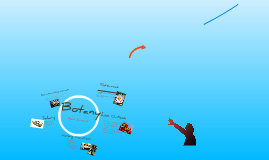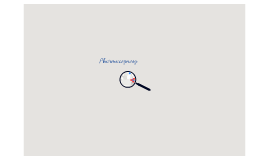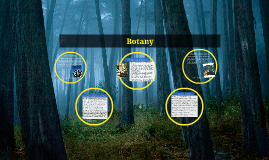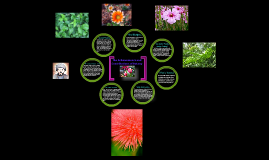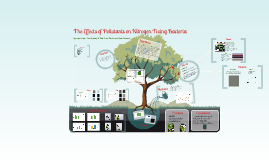Botany
Transcript: What are it's uses? - The term hemp was used originally to refer to any plant that was harvested for its fiber. - The cannabis sativa plant is now what's most often being referred to when discussing hemp, although some plants from other generas kept the name. Varieties Goal Cannabis sativa - The plant is usually dioecious, but in cases of poor growing conditions they are monoecious. - The inflorescence happens first in the stamen, but the pistillate ones remain until the seeds mature. - The staminate structures are clusters, the pistillate ones are more of spikes. - Mostly likely self-pollinated because of the presence of both genders on the plant By Cai Barias What does it look like? Are there other types of Hemp? - Crotalaria juncea L. - A member of the Legume family - Used as a cover crop all over the world, meaning that farmers grow Sunn Hemp during the winter seasons to maintain the quality of their soil. It helps to control soil erosion, conserve soil water, and recycle plant nutrients. - A fibrous crop that originated in India, but it’s also used in Pakistan and Bangladesh Reproduction NETHERLANDS NEW ZEALAND POLAND ROMANIA RUSSIA SLOVENIA SPAIN SWITZERLAND TURKEY UKRAINE EGYPT KOREA PORTUGAL THAILAND AUSTRALIA AUSTRIA CANADA CHILE CHINA DENMARK FINLAND FRANCE GERMANY GREAT BRITAIN HUNGARY INDIA ITALY JAPAN Hemp (Cannabis sativa) Start Where is it found? - Textiles, clothing - Plastics - Medicine - Livestock feed - Body care products - Construction - Food - Essential oils Hemp Producing Countries - It’s a member of the family Urticaceae, as well as the Cannabinaceae tribe. - It belongs to the same genus and species as the psychoactive drug marijuana. - There are major differences in THC content of the strain used as a drug and the strain used for the fiber present in the stalks. - Hemp is the name commonly used when referring to the strain NOT used for psychoactive purposes. - Grows anywhere from 1.5-4.5 meters tall, and has a woody stem. - It has vegetative and flowering parts. - Cannabis is an annually flowering plant. - The leaves are compound and palmate, with around 7-10 leaflets each. - Typically the kind used for hemp has fewer ramifications (where the stem separates into smaller branches, twigs, etc.) Sunn Hemp Legal Issues - He cultivated the plants legally under Sioux Tribal laws, but the federal government overrode the law and destroyed his crops. - Apocynum cannabinum L. - It’s a member of the dogbane family, and is also known as milkweed or bitter root. - Fibers are used primarily as twine for clothing, baskets, rugs, bags, and even a string calendar or “counting the days” ball. -Native American tribes were the first to use it for those purposes, hence “Indian” - Hemp is included in the federal governments definition of marijuana despite the fact that it has <1% THC content. - Hemp products can be imported, seeds are often legally imported as food. - During World War II the production of hemp was actually encouraged as a part of the war effort. - Federal law prohibits the cultivation of hemp, however 17 states have already passed pro-hemp legislation 1) Morphology of Glandular Hairs of Cannabis sativa from Scanning Electron MicroscopyCharles T. Hammond and Paul G. Mahlberg American Journal of Botany , Vol. 60, No. 6 (Jul., 1973), pp. 524-528 Published by: Botanical Society of AmericaArticle Stable URL: http://www.jstor.org/stable/24413752) Shannon L. Datwyler,1,2 Ph.D. and George D. Weiblen,2 Ph.D.Genetic Variation in Hemp and Marijuana(Cannabis sativa L.) According to AmplifiedFragment Length Polymorphisms_http://geo.cbs.umn.edu/Datwyler&Weiblen2006.pdf3) Maiti, R. K.. Satya, Pratik. Rajkumar ,Dr., Dasari. Ramaswamy, Allam. Crop Plant Anatomy. (http://books.google.com/books?id=8_m7aIfR7xEC&pg=PA200&lpg=PA200&dq=%22Plant+morphology+of+hemp&source=bl&ots=HeuZsKT0WK&sig=0nf3_fTdWzV4nIj-NnvB9syoJQQ&hl=en&sa=X&ei=RErCUOyqIoi0qAGI-IGADw&ved=0CFAQ6AEwBTgK#v=onepage&q=%22Plant%20morphology%20of%20hemp&f=false)4) Small, E. and D. Marcus. 2002. Hemp: A new crop with new uses for North America. p. 284–326. In: J. Janick and A. Whipkey (eds.), Trends in new crops and new uses. ASHS Press, Alexandria, VA.http://www.hort.purdue.edu/newcrop/ncnu02/v5-284.html5) http://www.hcs.ohio-state.edu/hcs/TMI/HCS210/HortOrigins/BrDomestic.htmlUnited States Department of Agriculture; Natural Resources Conservation Service -http://soils.usda.gov/sqi/management/files/sq_atn_10.pdf-http://plants.usda.gov/plantguide/pdf/cs_apca.pdf7) http://www.agf.gov.bc.ca/speccrop/publications/documents/hempinfo.pdf8) http://www.thehia.org/facts.html9)http://www.naihc.org/home/304-2011-industrial-hemp-legislation-introduced-in-congress Hemp Morphology What is hemp? Indian Hemp







